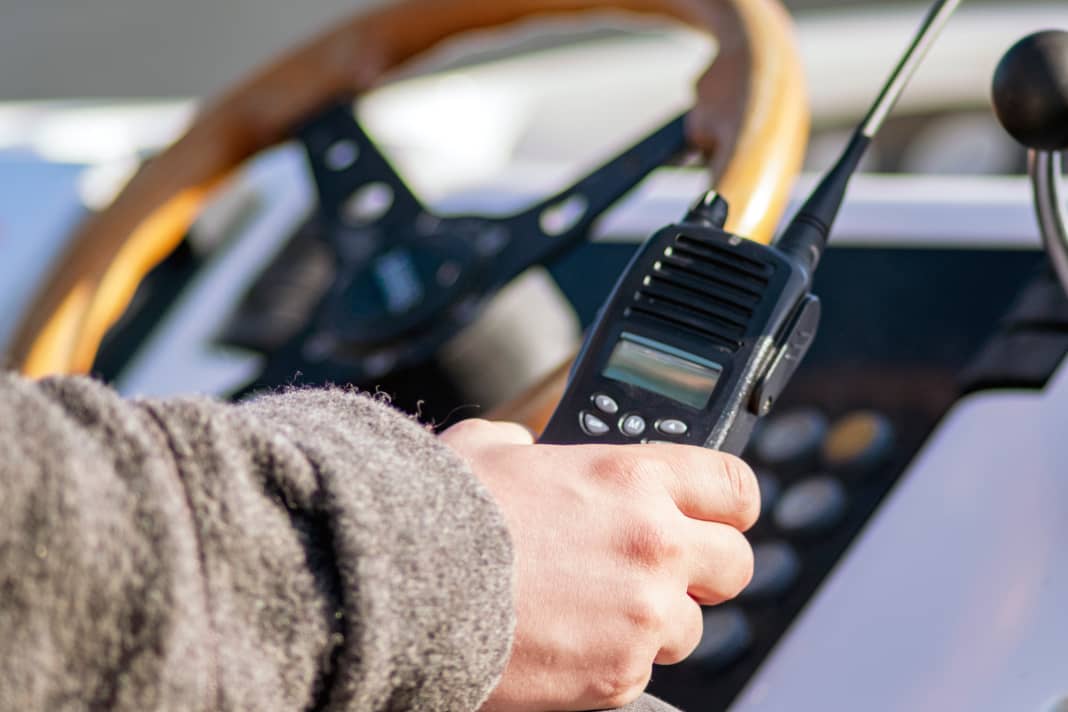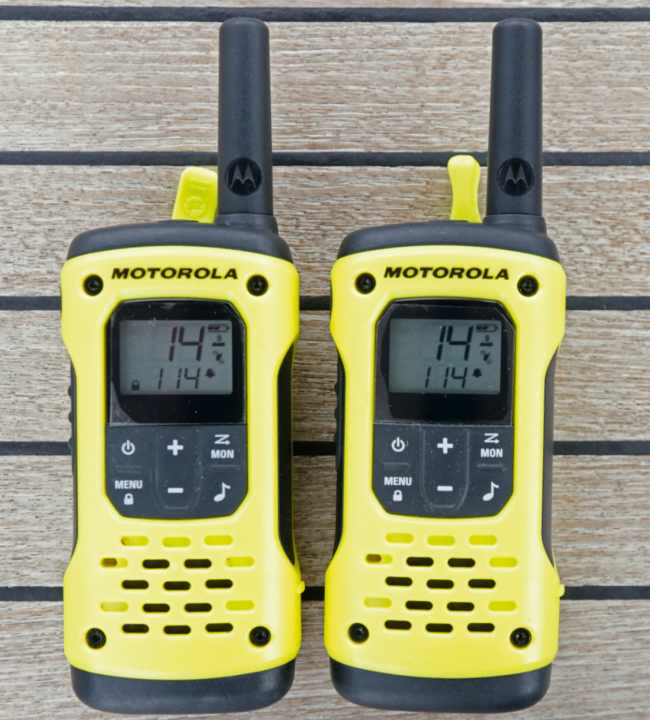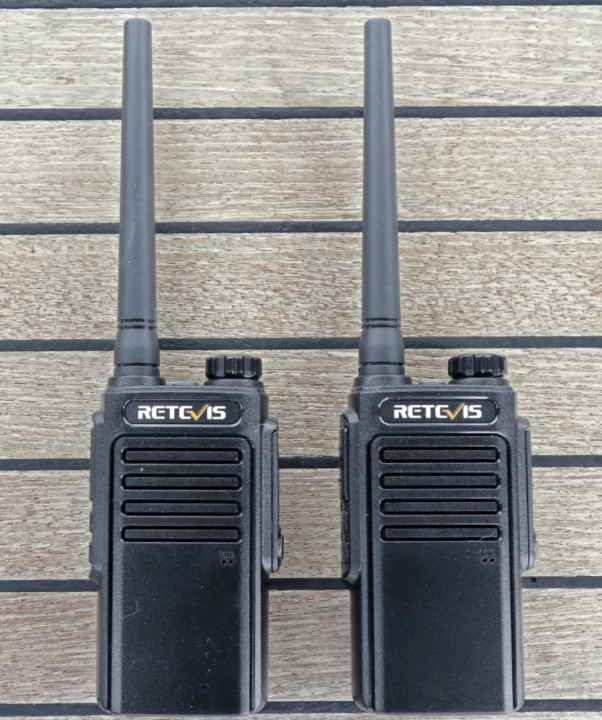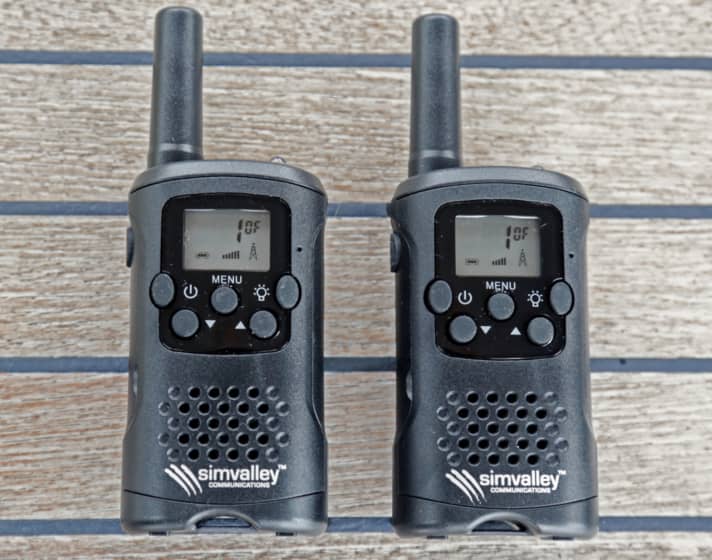Walkie-talkie: The whole crew on the same wavelength - four devices put to the test
Michael Rinck
· 16.11.2023






Loud shouting during a mooring manoeuvre is not a sign of confident ship management. Other crews in the harbour quickly suspect, usually rightly, that the planned manoeuvre is going wrong. The mooring manoeuvre may not have been adequately discussed beforehand or the situation in the harbour may have prompted the helmsman to spontaneously change his plans. Communication can then be impaired by wind or loud engine noise, even on small boats. On large motor yachts, the distance between the helm and the foredeck simply makes it difficult to understand commands clearly.
While casting off is usually still problem-free, situations can arise, especially when mooring in unfamiliar harbours, that make it necessary to coordinate with the crew again. Radios or Bluetooth headsets can help here.
PMR stands for Private Mobile Radio. Better known as a walkie-talkie. Such devices may be operated on board without a licence or registration.
However, as with FM radio systems, they work in a simplex manner, with only one channel available. Speaking at the same time does not work; if you want to say something, you have to press the PTT button (Push to Talk). This requires a certain degree of radio discipline. Anyone who tries to interrupt the other person will not be heard. If you monologue for too long, the channel is blocked and there is no answer.
Walkie-talkie test: We have tested these devices
Four PMR radios were tested: the Motorola T92H2O, the Retevis RT647 and the WT-320 and WT-330 from Simvalley. A headset for the Simvalley devices also took part. In addition to the different functionality, the prices also vary greatly between 40 and 123 euros.
The radios all did their job well. Switch on, select the same channel, press the button and speak - no problem. Operation in VOX mode proved to be more difficult. Theoretically, the device then recognises speech, opens the channel automatically and releases it again as soon as there is no more speech. The other person can then answer. In practice, however, even faint wind noises or rustling clothes are enough to open the channel. However, this means that the channel is busy for the other device.
The sensitivity of the noise detection can be adjusted, but this hardly helped. If it did work, the device usually swallowed the beginning of the sentence, as it first has to identify the sound and open the channel, which takes some time. It can therefore be useful to start each sentence with a long "erm". That way, no information is lost. However, a normal exchange does not take place. Even with the Simvalley headset, this fundamental problem did not change.
Big advantage: PMR radios are independent of the mobile phone network
According to the instructions, the Retevis radios can also be switched to VOX mode, but this is probably only possible with a connected PC and not via a key combination.
Significantly smoother communication is therefore possible with headsets, among other things, which we have also recently tested. However, these are dependent on the mobile phone network in connection with the smartphone (via call). PMR radios are cheaper and independent of the mobile phone network. They are also suitable for keeping in touch with children on a dinghy trip. With the Motorola and Retevis models, there is also no need to worry about possible contact with water. The devices are well protected and very robust. Operation is simple. In addition, any number of additional devices can be used for communication if the crew is larger.
PMR radios from Simvalley are inexpensive, with a set of two walkie-talkies starting at just 40 euros. However, the radio systems from Motorola and Retevis offer better protection against the elements, and the former even float. For just over 100 euros, these models offer good value for money.
There is no doubt that the robust and proven radio technology of walkie-talkies can be helpful. The short reach for the PTT button does not always have to be a hindrance.
Walkie-talkie test: the results
Tests were carried out under realistic conditions, on board during harbour and anchor manoeuvres.
Motorola T92H2O

The name says it all: H2O indicates that Motorola's PMR radios are made for water sports enthusiasts. They are waterproof to IP67 standard, float and have an emergency light that activates on contact with water. This increases the chances of finding a walkie-talkie that has gone overboard, even in the dark. The VOX mode does not work reliably, but otherwise it's great!
Technical data
- Manufacturer: Motorola
- Model: T92H20
- Charging connection: USB
- Weight: 246 g
- Price: 104,95 Euro
- Rating: Very good (*****)
- motorolasolutions.com
Retevis RT647

The PMR walkie-talkies from Retevis come in a very robust and minimalist design, so there is no display. Selected channels are communicated by voice output. This makes operation somewhat less intuitive, but still works well. Technical data The devices are waterproof in accordance with the IP67 standard. A headset with proprietary connection is available, as is a VOX mode. Practical: charging station with USB.
Technical data
- Manufacturer: Retevis
- ModelRT647
- Charging connection: USB
- Weight: 356 g
- Price: 123,45 Euro
- Rating: Good (****)
- kaufland.de
Simvalley WT-320

Attractive price, but also a few disadvantages: Simvalley's walkie-talkies are not waterproof and are not rechargeable. Each device is powered by three AAA batteries. The WT-320 worked well in the test. They offer an LED light, a connection for headsets and a VOX mode. However, ambient noise activates the channel unintentionally. A hand on the button is therefore necessary.
Technical data
- Manufacturer: Simvalley
- ModelWT-320
- Charging connection: none
- Weight: 204 g
- Price: 39,99 Euro
- Rating: Satisfactory (***)
- pearl.com
Simvalley WT-330

Slightly higher price than the almost identical WT-320 devices, but also some added value: The Simvalley WT-330 has rechargeable batteries and can be charged in a station on shore power. Otherwise, there is no difference in functionality. Both Simvalley models are very handy compared to the other test devices. They can be attached to clothing using a clip on the back.
Technical data
- Manufacturer: Simvalley
- ModelWT-330
- Charging connection: 230 Volt
- Weight: 194 g
- Price: 52,99 Euro
- Rating: Satisfactory (***)
- pearl.com

